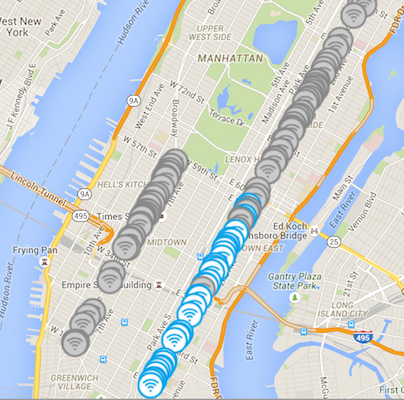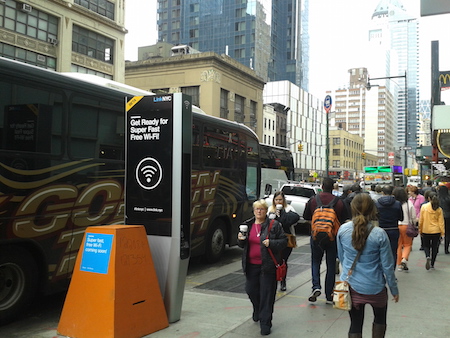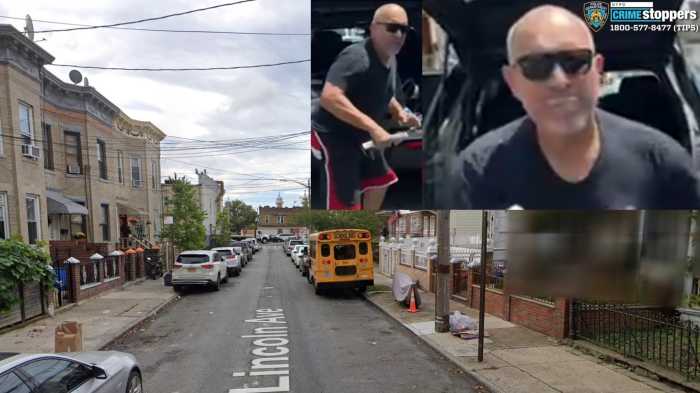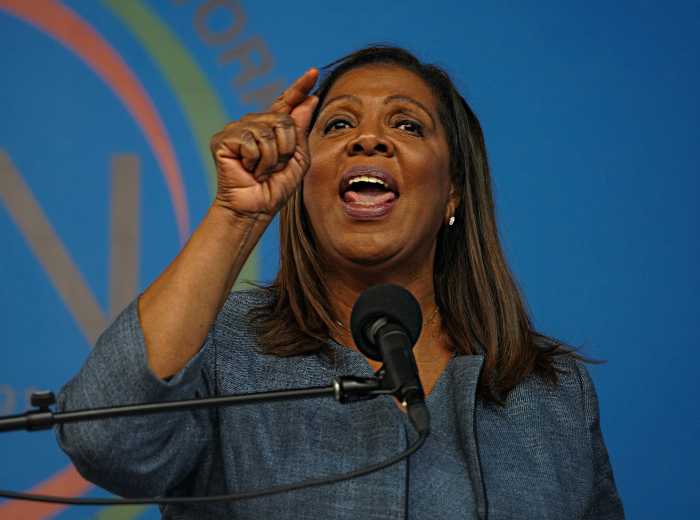
BY COLIN MIXSON | The age of fishing for change to make a call — rendered obsolete for most people carrying cell phones — is coming to something of an official end in New York, as the city begins replacing thousands of coin-operated payphones with up to 10,000 free, high-speed wireless fidelity (WiFi) kiosks powered by hundreds of miles of robust fiber optic cable.
In phase one of the rollout, kiosks have been activated along Third Avenue from 14th Street to 57th Street, and they are being installed on Third Avenue north all the way to the Harlem River and on Eighth Avenue from 14th Street to Columbus Circle. With the first several hundred LinkNYC hotspots coming online, many say it’s about time the city upgraded its increasingly anachronistic payphones.
“I think it’s a great idea,” said Collins Nai, a junior studying at the Fashion Institute of Technology. “These payphones are obsolete.”
LinkNYC, which takes the physical form of sleek, modern-looking kiosks, will emit gigabit-speed wireless Internet in a 150-foot radius that can be accessed free of charge via digital devices, such as wireless-enabled cellphones, computers, and tablets. Touch-screen interface for web browsing on the kiosk itself is also available.
The kiosks also enable free calls anywhere in the United States, as well as provide maps, city services, and an emergency call button for phoning 911, in addition to cellphone charging capability.
The mayor’s office was unable to provide an exact number of kiosks being activated in the initial rollout, but said the so-called “links” in the Third and Eighth Avenue corridors in Midtown would be up and running by July.
The kiosks are being roughly sited to replace existing payphones — taking advantage of existing conduits and power lines beneath them — although the payphones, which sometimes come in batches of two or three booths, will not see more than one link installed in their place, and no kiosk will be installed within 50 feet of another.
The Wi-Fi rollout is the culmination of several years of planning and feasibility studies to determine how existing payphone infrastructure, such as conduits, electricity, and phone lines, could be utilized by the city amidst the proliferation of cellphones and portable computers.
Nationwide, payphones are rapidly going the way of 8-track tapes, with the roughly 872,000 coin-operated phones in 2007 having been reduced to 195,000 by 2014, according to the American Public Communication Council (APCC), a national trade association representing independent payphone operators.
The decline can be directly linked to the rise of the mobile phone and, additionally, to the so-called “Obama phones,” or cellphones paid for through the federally subsidized Lifeline Assistance Program, which was greatly expanded over the past seven years.
“Obviously cellphones totally changed the payphone industry,” said Deborah Sterman, CFO for APCC and APCC Services. “And the federal cellphone program was really not a good thing for the payphone industry.”
That said, Sterman noted that payphones in areas with large immigrant populations such as southern Texas, Florida, California, and New York City still enjoy robust usage.
The city piloted the free Wi-Fi program in 2012, when the Department of Information Technology and Telecommunications spearheaded the installation of 25 hotspots throughout the five boroughs, while simultaneously advertising a request for information in order to gauge the capabilities of various communications suppliers to find new use for the city’s payphones.

These early initiatives were followed by vendor scouting programs, in which the city solicited companies to submit business proposals with guidelines requiring free calling to 311, 911 and free 24/ 7 public Wi-Fi — which ultimately resulted in Mayor Bill de Blasio’s 2014 announcement that the CityBridge Consortium had been chosen to install and maintain the LinkNYC kiosks.
The phase one rollout will see more than 500 LinkNYC kiosks installed in select areas throughout the city by summer; in addition to the current Manhattan corridors, the program will focus on Flatbush Avenue in Brooklyn, Jamaica, Queens, the South Bronx, and the St. George neighborhood in Staten Island. The program will expand in phases throughout the next 12 years, by which time the city will have completely removed the 6,451 payphones it estimates currently exist on city streets. A spokesperson for the mayor’s office said that in their place, between 7,500 and 10,000 links Wi-Fi links will have been installed.
Along Third Avenue, where LinkNYC kiosks have already been activated, locals have been impressed by the gigabit-speed Wi-Fi signals the links emit.
One mattress salesman on the East Side said that he sometimes uses the link Wi-Fi in lieu of his normal Internet provider.
“If my service is really slow, I’ll use the link,” said Mark Anthony, who works at the Third Avenue Sleepy’s near 14th Street.
On the West Side, locals say they most look forward to putting worries about finding a place to charge their phones while on the go behind them, and not having to hunt down a phone in case of emergency.
“If you have an emergency, people look at you funny if you ask to use their phone, like you’re going to try and walk away with it,” said Nadia Leonelli, a 13-year Chelsea resident. “So they might be useful for that.”
New Yorkers will likely find many different uses for the new Wi-Fi kiosks, but one thing is for certain — they’re not using the payphones, and for more reasons than one.
“I haven’t used a payphone for 10 years,’ said Leonelli. “A lot of them don’t even work and, you know what? They’re kind of gross.”
For more information on the program’s rollout, visit link.nyc.




































